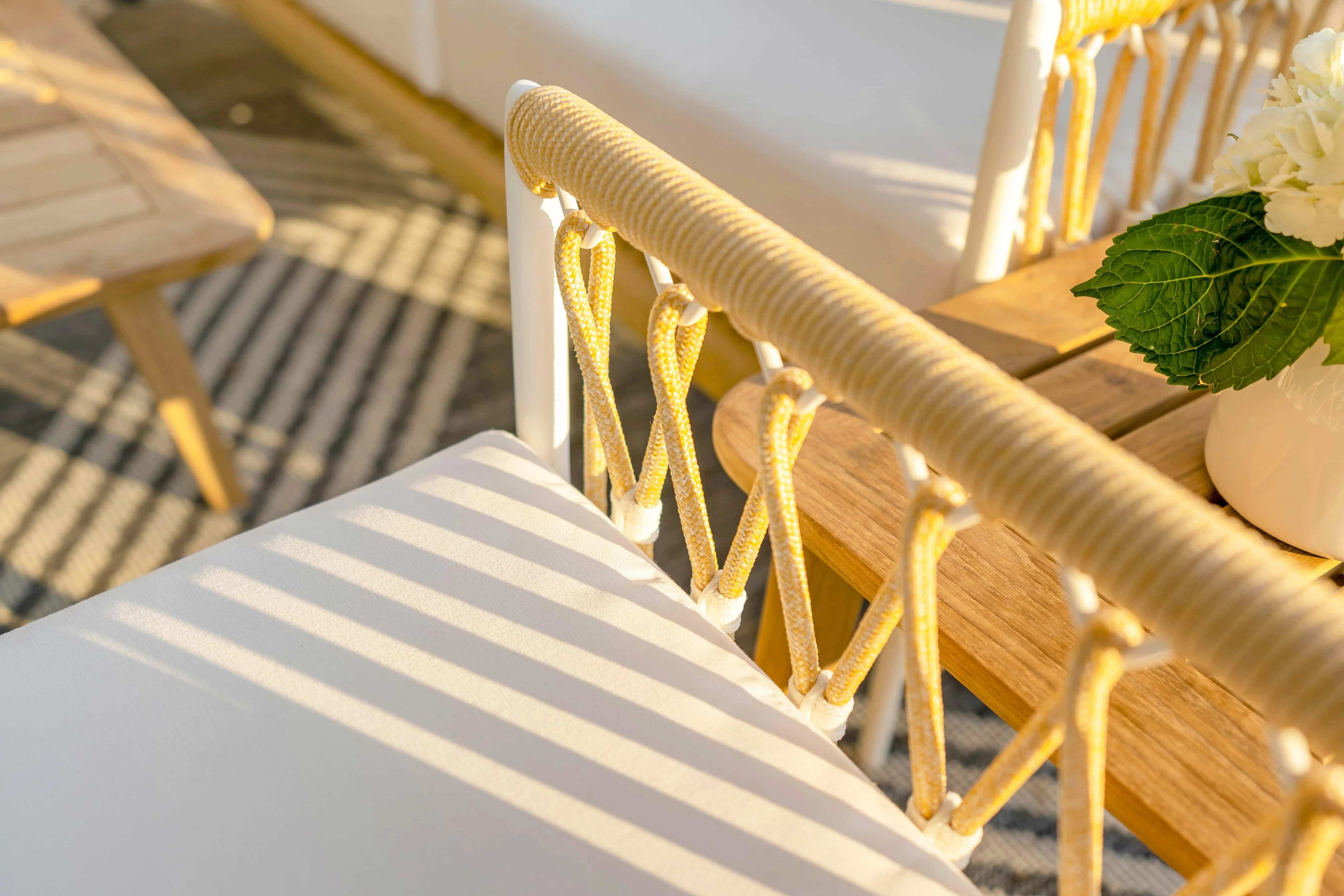What is rope material?
Rope furniture describes outdoor seating and tables whose framework leans on tightly woven rope laid over sturdy bases of aluminum, steel, or teak. Unlike typical cotton rope, the strands in these collections are advanced synthetic strands like olefin, polyester, or polypropylene—fiber explicitly engineered for outdoor durability and load-bearing strength
Shop rope outdoor furniture at HC Luxury Outdoor.
The component ropes are manufactured to:
-
Shield against UV rays, keeping colors rich and preventing the fibers from brittle breakdown.
-
Force rain and dew to bead and roll away, thwarting moisture and the bouquet of mold and mildew.
-
Retain tensile strength, snapping back without deformation when burgundy cushions or hat boxes sit on the seat.
-
Carry color that saturates the strands during extrusion, so even edges that wear display unfaded hues.
Design gurus lean on rope furniture for its slender silhouette and a welcome dose of gentle rebound. A wedge of elasticity lowers seating angles just enough to mirror the spine, while the ones and ropes—bar microscale bricks and macro woven ribbons—drip textural hospitality and finish the outdoor room with effortless polish.
Rope furniture is just the right mix of lightness and practicality, so you can shift the chair or table for the sun or the wind without breaking a sweat. Its woven and generally soft outlines look great beside the slats of a teak sunbed, the curves of a wicker side table, or the clean lines of polished aluminum frames, so you can toss it onto an existing patio without the slightest hitch, whether the style is ultra-modern or comfortably traditional.
How to Care for Rope Furniture
Proper care will keep rope furniture looking fresh, extend its lifespan, and ensure that the woven patterns remain taut and vibrant.
Routine Cleaning
Dust and debris can lodge between fibers, so brush surfaces regularly with a soft-bristle brush or vacuum on low suction.
For a deeper clean, mix mild dish soap with warm water. Dip a soft cloth or sponge into the solution and gently scrub the rope in the direction of the weave.
Rinse thoroughly with clean water and let it air-dry completely in a shaded, ventilated area. Avoid drying in direct sunlight, which can accelerate fading.
Spot Cleaning Stains
Spills should be cleaned immediately to prevent them from soaking into fibers. Blot—don’t rub—liquids with a clean cloth.
For stubborn stains or mildew, create a solution of 1 part bleach (or white vinegar) to 3 parts water. Test it first on an inconspicuous area to make sure it doesn’t alter the rope’s color. Rinse thoroughly afterward.
Cushion covers or frames should also be cleaned separately to ensure stains don’t transfer.
Avoiding Damage
While rope is weather-resistant, it’s not indestructible. Prevent contact with sharp objects or pet claws that can snag or cut fibers.
Avoid using abrasive brushes, scouring pads, or high-pressure washers that may weaken the weave.
Do not allow water to pool within the weave or the frame beneath the rope; stagnant moisture can encourage mildew or damage hidden components.
Minimize prolonged exposure to direct sunlight to preserve the vibrancy of rope color.
Storage & Protection
During heavy rain, winter, or long periods of non-use, cover your rope furniture with breathable outdoor covers. Avoid plastic tarps that trap moisture.
Store indoors or in a sheltered space during off-season months. This reduces exposure to harsh UV rays, salt air (in coastal regions), and freezing temperatures that can stiffen fibers.
Always ensure that furniture is completely dry before covering or storing it to prevent mildew.
FAQs
Can rope furniture get wet?
Yes, but allow it to dry thoroughly to avoid mildew.
How often do I need to clean rope furniture?
Monthly light cleaning; deep clean seasonally.
Is synthetic rope fade‑proof?
UV‑resistant, but may fade gradually.
How do I store rope furniture for winter?
Clean, dry, and cover or move indoors.



